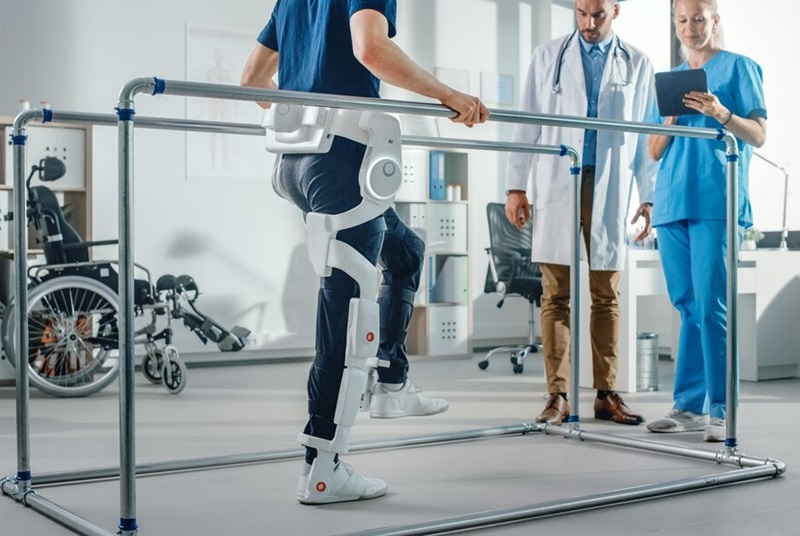Knee pain can significantly impact your quality of life, and for many, knee replacement surgery offers a path to lasting relief. But with advancements in technology, the traditional approach is no longer the only option. Robotic knee replacement is emerging as a game-changer, offering increased precision and potentially faster recovery times. But within this new field lies a diverse landscape of different robotic systems and techniques. So, if you’re considering robotic knee replacement, understanding these variations is crucial.

The Main Players: Key Players In The Robotic Field
Firstly, let’s meet the key players in the robotic knee replacement world:
With the rise of robotic knee replacements, understanding the differences between available systems becomes crucial for informed decision-making. Let’s delve deeper into the three mentioned systems, exploring their distinct approaches and potential advantages:
1. Mako System
Imagine a robotic arm equipped with advanced sensors and software, precisely guiding the surgeon’s hand during bone preparation. That’s the essence of the Mako System. Here’s how it works:
- Pre-Surgical Planning: High-resolution CT scans of your knee create a 3D virtual model. The surgeon uses this model to plan the implant placement and bone resections with pinpoint accuracy.
- Intraoperative Guidance: During surgery, the robotic arm, guided by the pre-planned model, assists in making controlled bone cuts. This minimizes potential for human error and ensures precise implant alignment.
- Real-Time Adjustments: While the Mako system primarily acts as a guided tool, it allows the surgeon to make minor adjustments based on real-time visual feedback and tactile feel.
Potential Advantages:
- Greater accuracy and implant alignment: Reduced risk of component malpositioning, potentially leading to improved implant longevity and function.
- Minimized bone removal: The system helps conserve healthy bone tissue, potentially leading to faster recovery and improved joint stability.
- Improved soft tissue preservation: Precise bone cuts may help minimize damage to surrounding ligaments and tendons, potentially reducing pain and stiffness post-surgery.
2. ROSA Knee System: The Collaborative Surgeon’s Assistant
Think of the ROSA Knee System as a sophisticated data-driven partner, guiding the surgeon throughout the entire procedure. Here’s its approach:
- Real-Time Guidance and Feedback: Sensors track the surgeon’s movements and instrument position, providing continuous data and visual feedback on a screen.
- Dynamic Adjustments: Based on the real-time data, the system suggests adjustments to the surgical plan if needed. The surgeon ultimately makes the final decisions but has access to valuable data-driven insights.
- Virtual Reality Visualization: Some versions of ROSA offer an immersive virtual reality experience, allowing the surgeon to visualize the joint in real-time and plan their approach with greater clarity.
Potential Advantages:
- Enhanced surgical decision-making: Real-time data analysis may help surgeons optimize implant placement and adjust their approach based on individual anatomy.
- Potential for improved implant fit and stability: The system can provide feedback on implant fit during the procedure, potentially leading to better long-term outcomes.
- Increased surgeon comfort and confidence: The data-driven guidance and visualization tools may enhance surgeon confidence and potentially improve surgical efficiency.
3. NAVIO System: The Virtual Guide with a 3D View
Similar to ROSA, the NAVIO System utilizes advanced technology to guide the surgeon, but with a unique twist:
- 3D Navigation and Virtual Reality: The system creates a 3D virtual model of the joint based on CT scans. During surgery, the surgeon uses a handheld instrument tracked by the system to navigate through the virtual model and visualize the joint in real-time.
- Virtual Bone Cutting: The surgeon plans and executes bone resections virtually within the 3D model, with the robotic arm translating these virtual actions into precise physical cuts.
- Real-Time Adjustments: Similar to other systems, NAVIO provides real-time feedback and allows for adjustments based on intraoperative findings.
Potential Advantages:
- Enhanced visualization of the joint: The 3D virtual model provides a clear understanding of the joint anatomy, potentially leading to more precise decision-making.
- Improved implant fit and alignment: The virtual planning and execution can help ensure accurate implant placement and minimize bone removal.
- Potentially reduced risk of complications: Improved visualization and precise bone cuts may lead to fewer complications and faster healing times.
Understanding the Differences: Mako VS ROSA VS NAVIO
While each system shares the goal of improved outcomes, key distinctions exist:
- Level of Robotic Assistance: Some systems, like Mako, act as guided tools, while others like ROSA offer more autonomy in decision-making.
- Implant Compatibility: Certain robots work best with specific implants, so compatibility with your surgeon’s preferred choice is crucial.
- Surgical Approach: Not all robotic systems can perform every type of knee replacement, such as partial or complex revisions.
Here’s How You Can Choose The Right Match
Choosing the right type of robotic knee replacement depends on several factors:
- Your individual needs and anatomy: Discussing your specific case with your surgeon is vital to understand which system aligns best with your situation.
- Surgeon’s expertise and experience: The surgeon’s familiarity and comfort with a particular system play a significant role in its effectiveness.
- Hospital availability and cost: Not all hospitals offer every robotic system, and costs can vary, so research is essential.
Remember, robotic surgery isn’t a magic bullet. While it offers potential benefits, it’s not without its limitations. Careful patient selection, meticulous planning, and a skilled surgeon remain paramount for successful outcomes. Additionally, long-term data comparing robotic versus traditional approaches is still emerging.
By understanding the different types of robotic knee replacements and asking insightful questions, you can embark on this surgical journey with confidence. Remember, open communication with your surgeon is key to navigating the options and selecting the approach that best fits your unique needs and expectations.
Conclusion
Knowing the multiple areas of various systems is critical as we move forward with the exciting frontier of robotic knee replacement. The Mako System provides accurate direction, ROSA gives data-driven insights, and NAVIO makes use of 3D visualization, all of which have distinct advantages. Remember, there is no single “best” system; the greatest option is determined by your specific anatomy, surgeon’s expertise, and chosen method.
You may begin this path with confidence by communicating openly with your healthcare team and learning about the peculiarities of each technology, paving the way for a potentially smoother recovery and a future free of excruciating knee pain. So, take the first step toward educated decision-making, explore the robotic world, and choose the road that brings you back to mobility and a life in motion.










